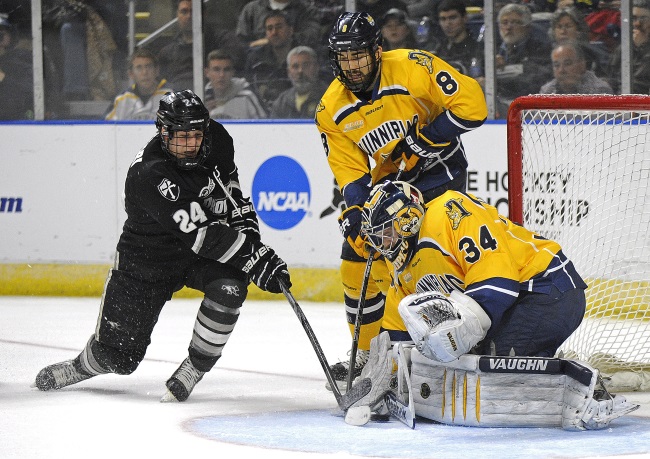- Attacking style not the only reason some Tottenham fans will back Ange Postecoglou until the bitter endPosted 5 months ago
- Paris Olympics takeaways: What did Team USA’s crunch-time lineup say about NBA’s hierarchy?Posted 10 months ago
- Zach Edey posted an easy double-double in Summer League debut. Here’s why he’ll succeed in NBAPosted 12 months ago
- What will we most remember these champion Boston Celtics for?Posted 12 months ago
- After long, seven-year road filled with excruciating losses, Celtics’ coast to NBA title felt ‘surreal’Posted 12 months ago
- South Florida men’s basketball is on an unbelievable heater– but also still on the bubblePosted 1 year ago
- Kobe Bufkin is balling out for Atlanta Hawks’ G League team. When will he be called up to NBA?Posted 1 year ago
- Former Knicks guards Immanuel Quickley, RJ Barrett may yet prove Raptors won the OG Anunoby tradePosted 1 year ago
- Rebounding savant Oscar Tshiebwe finally gets NBA chance he’s deserved for yearsPosted 2 years ago
- Is Tyrese Maxey vs. Tyrese Haliburton the next great NBA guard rivalry?Posted 2 years ago
NCAA hockey tournament needs to look at smaller field, double-elimination format
- Updated: March 31, 2016
OK, so this is coming from a Quinnipiac grad (a.k.a. the best team in college hockey, and a program that, if these suggestions had been in place, might already have a national title under its belt).
But that doesn’t mean the point isn’t valid. The NCAA hockey tournament is broken. It needs to be fixed.
When college hockey’s 16 best teams take the ice this weekend in regionals in the northeast and midwest, their entire seasons–nearly 40 games’ worth–will come down to sixty minutes, and the often cruel, fateful bounce of the puck.
College hockey teams play longer than anybody else on campus. They start in September and if they reach the Frozen Four, don’t get done until April. All of their hard work, sacrifice and lost teeth build towards, for two teams–four games in the spring.
It’s the same as basketball, where teams play nearly as long and their seasons can end on a buzzer-beating shot from half court. But as cruel as the NCAA basketball tournament can be, it’s nothing compared to hockey.
In hockey, one bad bounce off the boards, or a skate, or a friendly-fire stick, can send you home.
One goalie screen, one missed penalty call by a referee, one bad line change can make the difference between celebrating in confetti and crying in the locker room.

Was Yale the best team in the country in 2013? Nope. But the Bulldogs won the NCAA’s four-game tournament and took home the title. (AP Photo)
Take 2013. That year, fourth-seeded Yale, which finished the regular season 18-12-3, stunned top-seeded Minnesota (26-8-5), on a goal nine seconds into overtime in the first game of the tournament. The Bulldogs beat a 28-win UMass-Lowell team, 3-2 in the Frozen Four semifinal, and rode a hot goalie (Jeff Malcolm) to a 4-0 win over No. 1 Quinnipiac in the national final.
It didn’t matter that the Bobcats, who won an NCAA-best 30 games, had already beaten the Bulldogs three times that season. It didn’t matter that Quinnipiac, not Yale, had won the ECAC regular season title.
All that mattered was that Quinnipiac goalie Eric Hartzell couldn’t get his pad down to the ice quickly enough on a broken play at the end of the second period. Yale took a 1-0 lead into the locker room, and never looked back.
There’s no legitimate reason why an entire hockey season should come down to one broken play in the spring. Especially when a 4-seed like Yale (no disrespect to the Bulldogs) is essentially given the same opportunity to take home the trophy as Quinnipiac.
So here’s how we would fix the NCAA Tournament: Shrink the field to 12 teams. Why? Because it’ll save time, and because teams 13-16 don’t really deserve a chance to win the title, anyway.
Look at this year. 16th-seeded Rochester Insitute of Technology has an 18-14-6 record. 15-seed Ferris State is 19-14-6. 14-seed Northeastern went 22-13-5, 12-seed Minnesota-Duluth went 18-15-5.
Those teams don’t deserve the same shot at a title as Quinnipiac (29-3-7), North Dakota (30-6-4), St. Cloud State (31-8-1), or Providence (27-6-4).
We’d give the top four seeds a bye into the Elite Eight, and then let the rest of the 12-team field battle it out for the final four spots.
We’d also make the quarterfinals a best two-out-of-three on campus sites, and the Frozen Four semifinals and final best two-out-of-three as well.
We’d get rid of some regular season games (teams play nearly 40 of them), and move the tournament back a couple of weeks so that it doesn’t compete with March Madness.
Oh, and get rid of those stupid conference tournaments, which hockey leagues play like basketball, even though the games aren’t on television and don’t bring in any revenue whatsoever. (They also take three weeks to play, and for some inexplicable reason often involve a first-round series and then single elimination in the semifinals and finals).
Like in basketball, hockey conference tournaments also de-value the regular season by handing out an NCAA Tournament bid to the conference tournament champion.
Sure, playing an extra six games at the Frozen Four site would take an entire week to play, and fans and media might not be willing to devote that much time to them. But more high-drama games on TV would mean more interest, and more revenue.
You might think that all of this is just a Quinnipiac grad’s way of making things easier for his alma mater to win a national title.
Yes, it’d be good for the Bobcats, but it’d also be good for college hockey.


